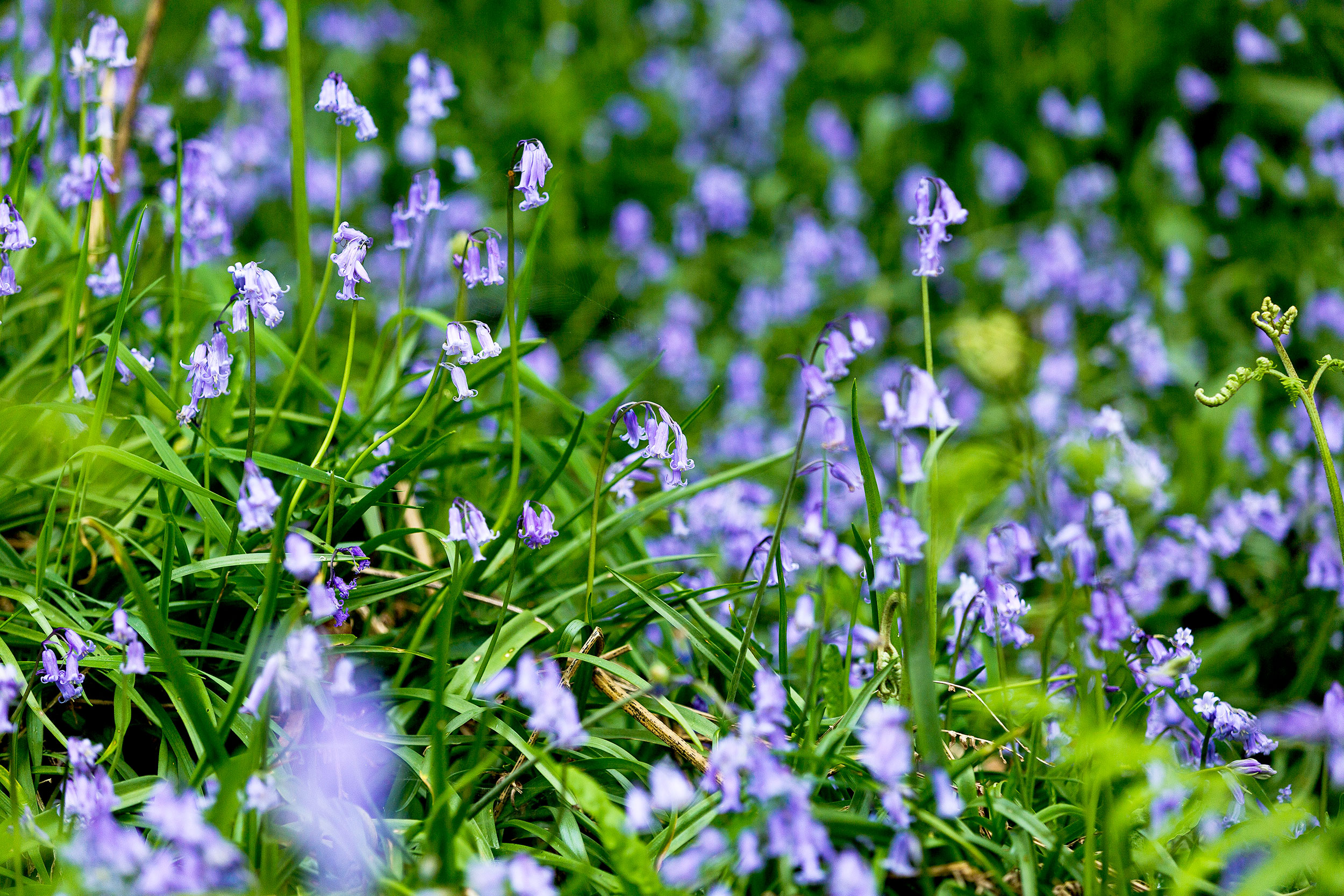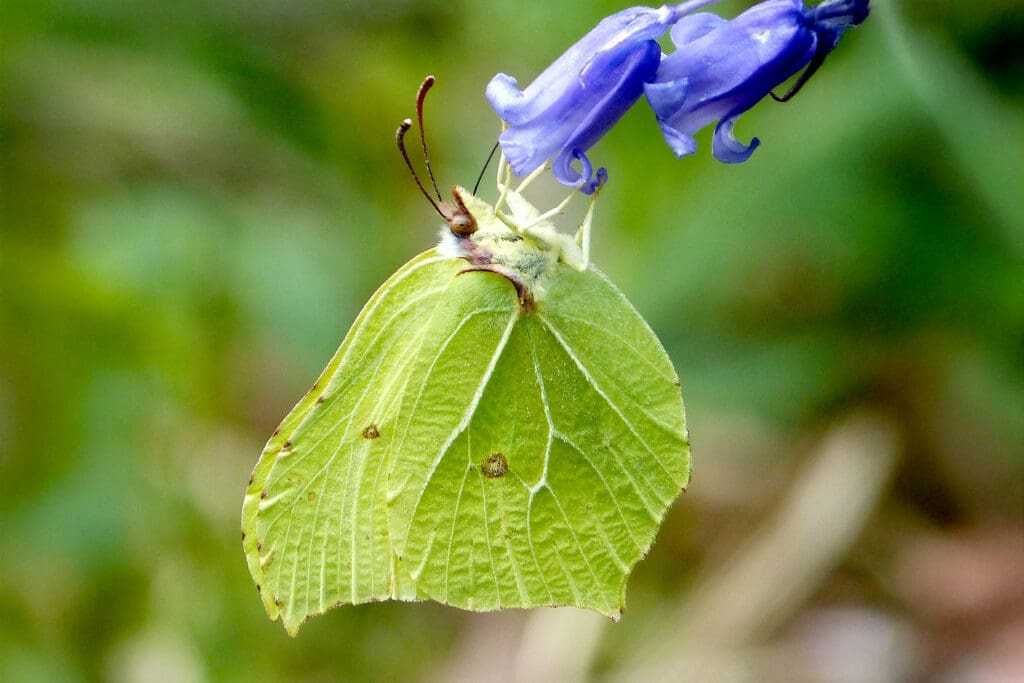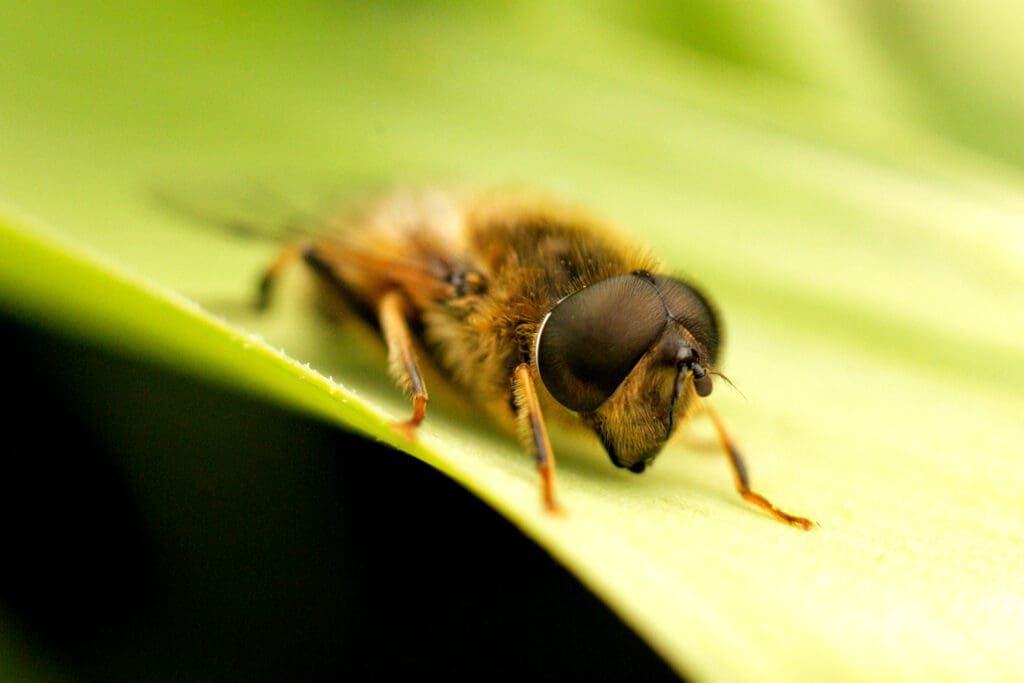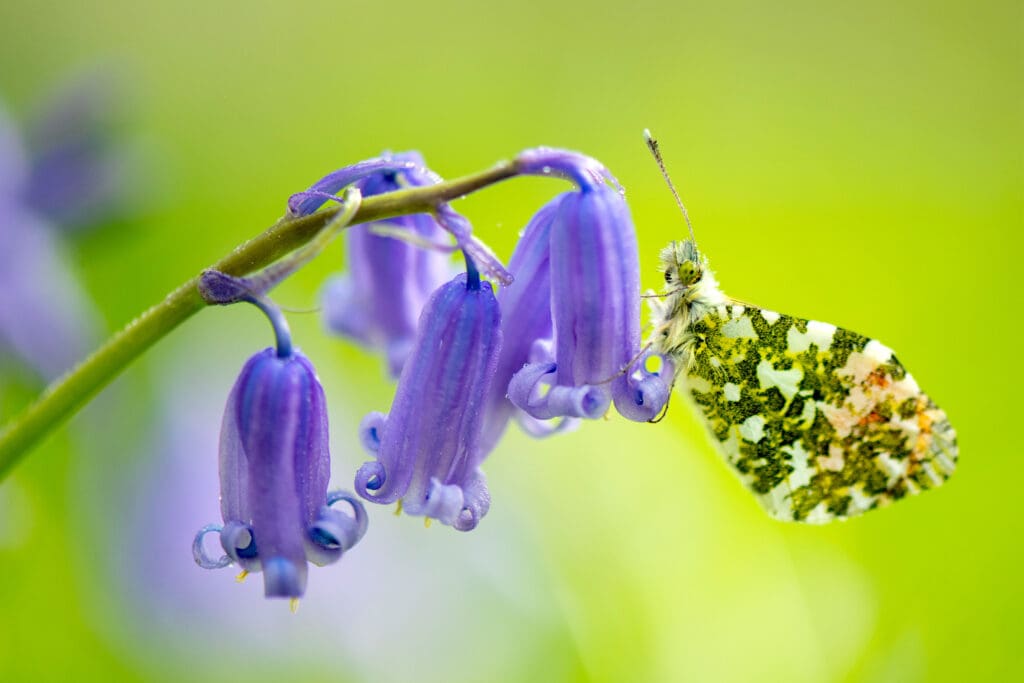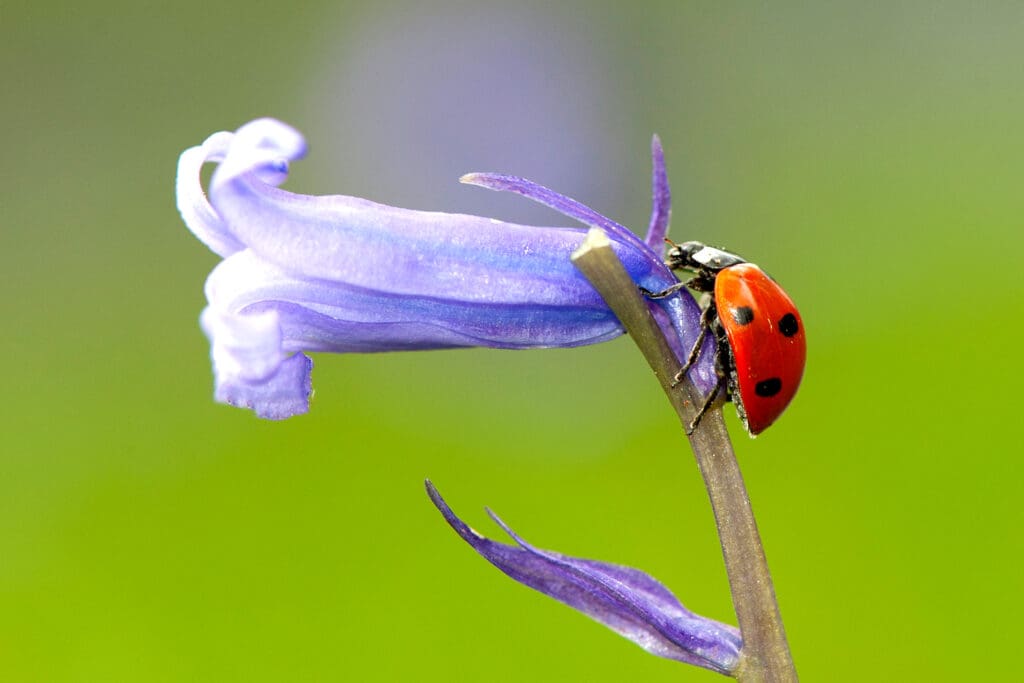After a long winter, the sight of a woodland floor transformed by Bluebells, with a birdsong backing track, is a restorative treat. A herald of spring, our native Bluebell is distributed along the coast of western Europe, but 25–50% of the global population is found here in the UK.
Our Bluebell woods are also important to a range of insects emerging in early spring, providing a source of nectar to bumblebees, hoverflies and butterflies such as the Orange-tip and Brimstone.
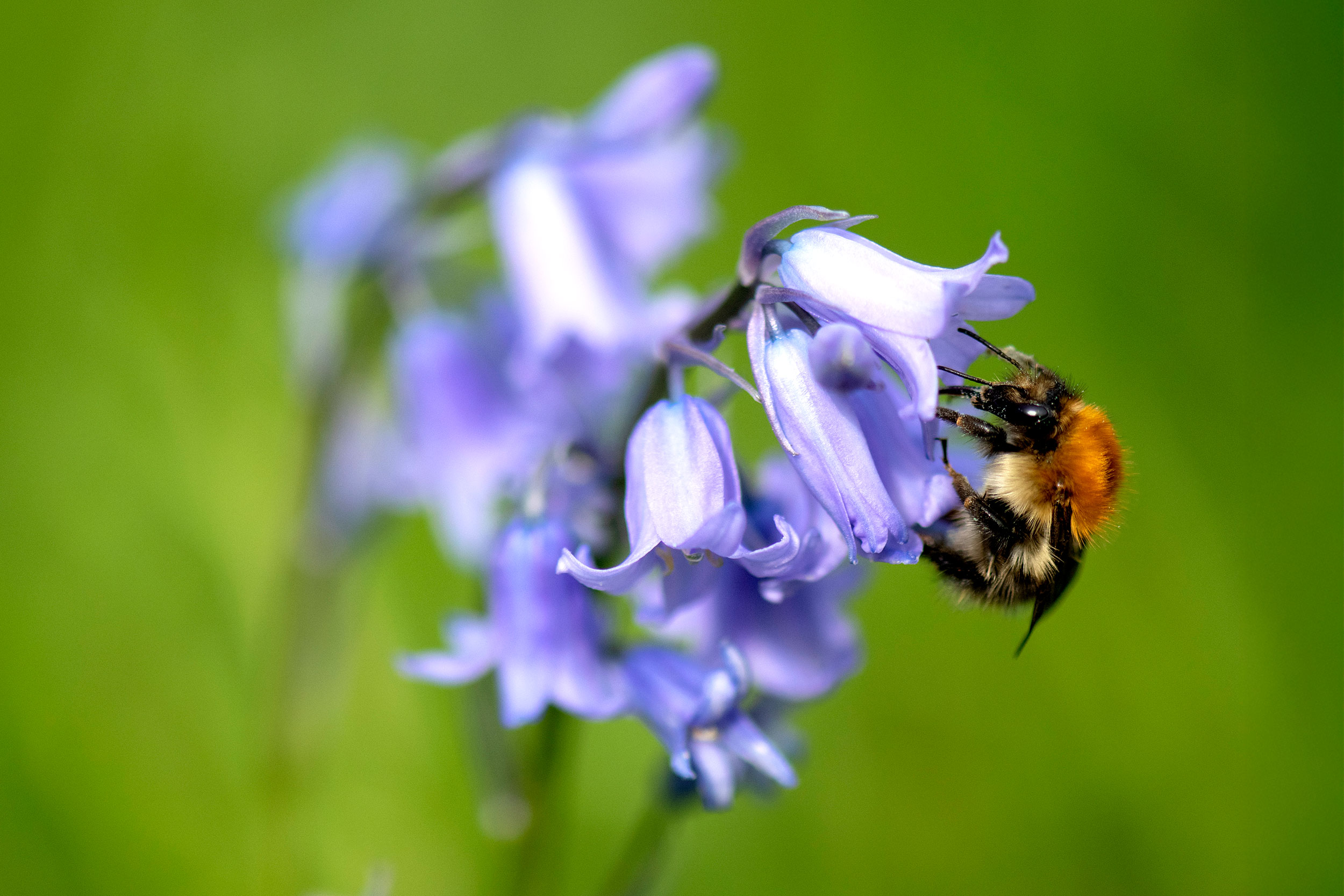
Common Carder Bee adult nectaring on Bluebell. Photo: Ben Andrew (rspb-images.com)
Among the insects drawn to the Bluebell, it’s probably the early-emerging bumblebees that are its most important pollinators. Sometimes, though, they don’t fancy getting dusted with pollen, so they bite through the base of the flower to access the nectary directly.
This is a reminder that most of the interactions we observe in nature and perceive to be harmonious are anything but. Plants need to get their pollen moved around, but they want to do this as ‘cheaply’ as possible. Likewise, pollinators would rather quaff the nectar without getting involved in the plant’s reproductive affairs.
At the extreme end of this relationship, some bumblebees even injure plants to stimulate them to produce more flowers, and therefore nectar.
You might also like
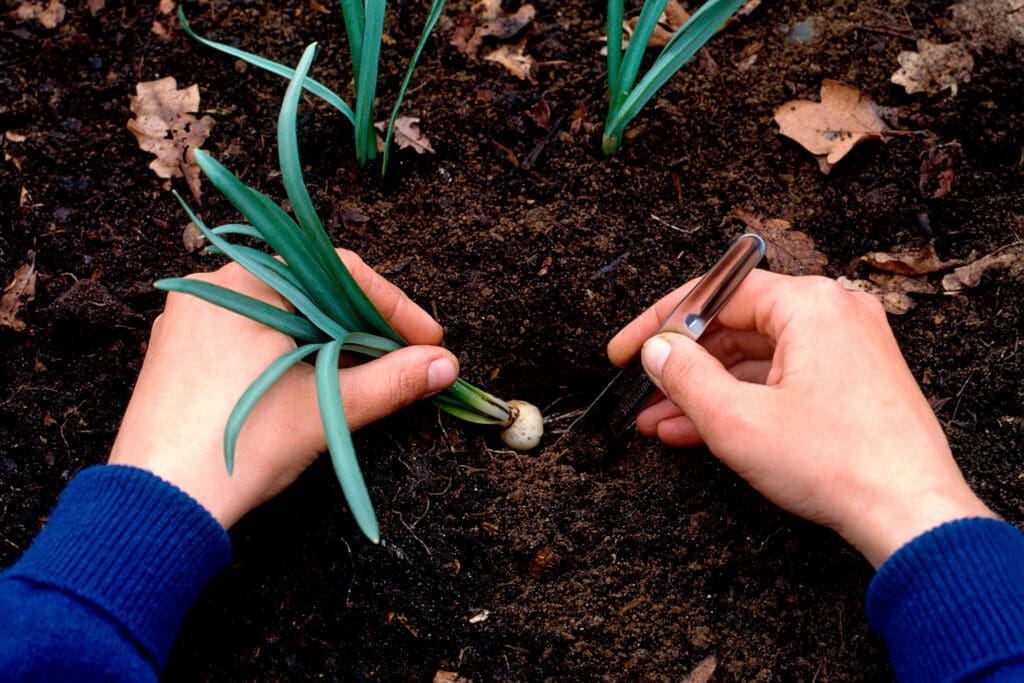
Going underground with bulbs

The spotter’s challenge: Can you find these three spring minibeasts?


